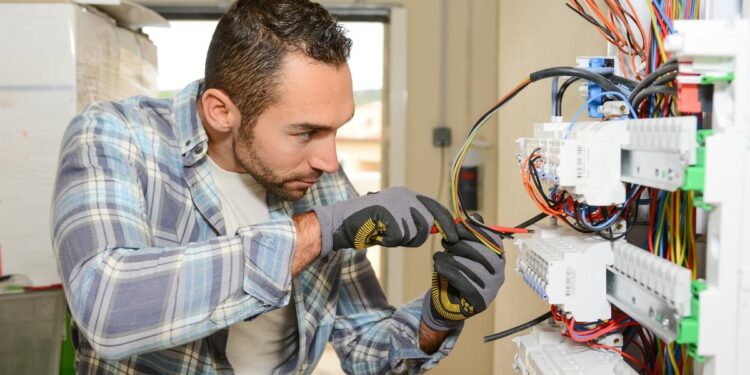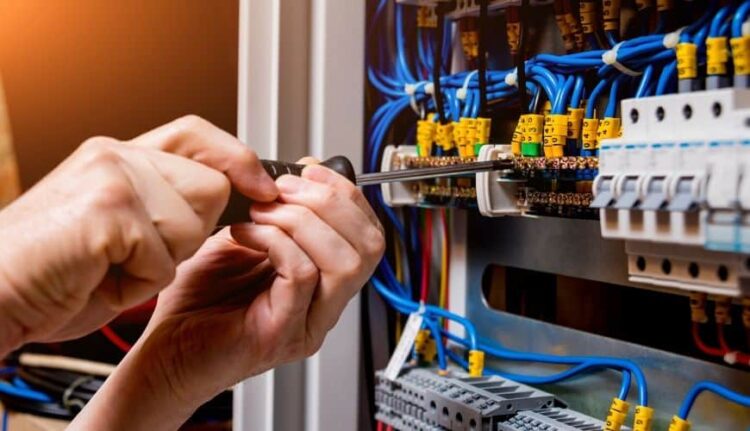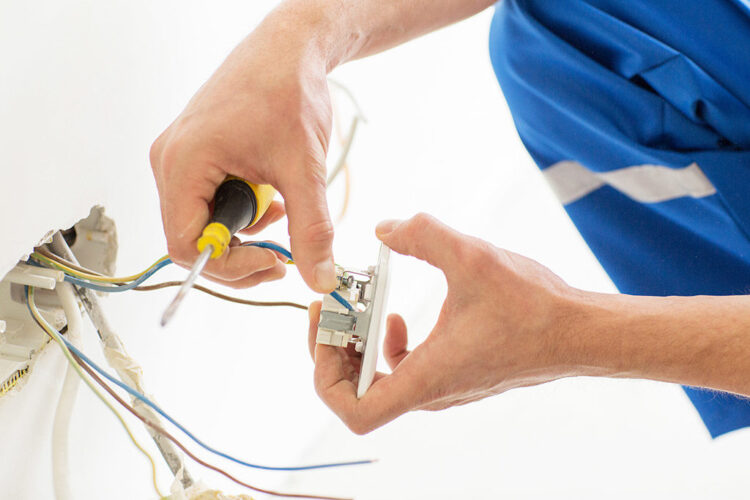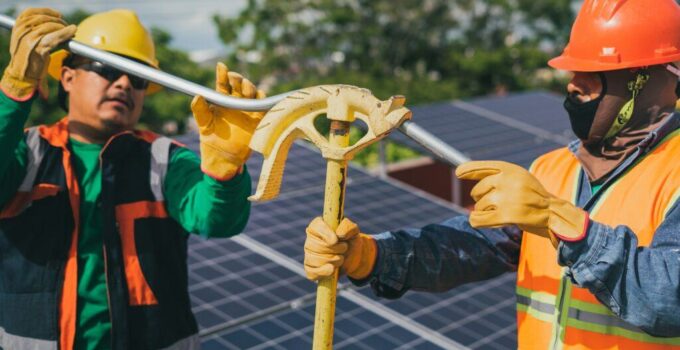Electricians are responsible for deploying and installing electrical work at the construction site. They are well equipped with the latest technology and tools like Bridgit to manage their work. They also remain active after the project delivery on the client’s request to oversee the electrical works in the building.
According to the US Bureau of Labor Statistics, electrician jobs are projected to grow by around 7% by 2030, higher than all other occupations. That shows electricians will be in high demand in the upcoming years.
If you are planning to pursue your career as an electrician, you must know about different types of electricians. This guide talks about 7 of them in detail.
Page Contents
1. Residential electricians
The most basic electricians work on residential projects like houses and apartments. Their responsibility includes:
Installation – Installing new electrical systems like security and air conditioning units.
Maintenance – Frequently maintaining electrical systems in homes.
Repair – Fixing damaged or faulty electrical appliances and systems.
To become a residential electrician, you must complete an apprenticeship program and learn the basics of executing electrical jobs. You should work with an electrical contractor on large-scale projects.
2. Commercial electricians

Source: blog.laborforhire.com
Commercial electricians have more complex responsibilities than residential electricians. Although they follow similar basics, they must learn how to implement electrical basics in a commercial environment. That includes multi-story business hubs, offices, schools, and hospitals.
Since commercial constructions are large-scale projects, commercial electricians work with the designers in the planning phase. Both designers and electricians draw electrical diagrams according to the client’s requirements.
You can use your own expertise in devising a commercial electrical plan if the client doesn’t include specific electrical requirements.
3. Industrial electricians
Do you know the $3,000 million steel mini mill industrial project, started in the first quarter of 2024, will be completed by the fourth quarter of 2024? That’s almost three years and nearly an average lifecycle of industrial construction projects.
Industrial electricians work on these projects and plan every electrical activity beforehand. For example, they will map electrical circuits during the planning phase and start working once during the concreting process.
Due to the lengthy timeline of such projects, industrial electricians don’t sit idle while the subcontractors are working. Instead, they finish designing electrical circuits throughout the building and arrange the hardware requirements.
4. Installation electricians

Source: topnotchelectrician.com
Installing electrical systems in a construction project is a lengthy task. Before installation, the installation electricians devise a plan with designers and arrange the required tools and equipment. Their planning includes the following:
Load calculation – Calculate the incoming amperage in the building and use that current to make calculations.
Wiring – Spreading wires in the necessary spots and concealing them with a protective layer.
Earthing – Using a low-resistance wire to transfer the instant electrical charge to the earth.
5. Solar panel electricians
Solar panels are an alternative to conventional electricity generation. Solar panel electricians install and deploy the system at the required destination and check its performance. With the ever-increasing development in the construction industry, solar panels are common in all construction projects.
As a solar panel electrician, you are responsible for finding the best location to install solar panels. You will also deploy multiple panels and connect them through wiring. To estimate the budget, you must know the cost of installing the solar panel system and its maintenance and repair costs.
6. Maintenance electricians
Maintenance electricians focus on checking the electrical system’s performance and frequently inspecting the building for possible faults. Their duty is quite slow as compared to other electricians. However, they work on projects longer than any other electrician.
Maintaining an electrical system is a risky task. Electricians must enter the core electrical feeders and stations to identify the fault.

Source: mistersparkymyrtlebeachsc.com
That’s why they must be equipped with the latest safety kits to mitigate the risks associated with electricity maintenance.
7. Automotive electricians
Electric cars are on the rise in developed countries and will soon dominate the conventional automobile market. These vehicles don’t run on gasoline. Instead, they need the electric charge from a source to operate.
That means the modern electric industry needs automotive electricians and electronic professionals who work on electronic systems embedded in cars. Here’s the difference, electronic engineers deal with the electronic component, while automotive electricians deal with the electrical components.
That means automotive electricians also work on conventional cars. For example, they will check and repair the car’s air-conditioning, ignition, anti-brake, and lighting systems. However, their work will become more complex once they work in electric cars because of the smart electronic system.
Road to become an electrician
You should consider the following roadmap if you are pursuing your career as a professional electrician.
1. Education
First, get an academic degree from a reputable institute. Students usually go for a bachelor’s in electrical engineering, a four-year program. You can also go for a master’s in electrical engineering to upgrade your academic qualification.
2. Apprenticeship

Source: jamesgmartin.center
You must join a technical institute or relevant organization and complete an apprenticeship program. During that program, you will learn how to implement electrical methodologies in the project.
You will also stay under a senior’s supervision and keep working with them to learn the latest techniques in the electrical field.
3. Journeyman electrician
You must complete your apprenticeship before applying for a journeyman electrician. Once you complete your apprenticeship, acquire a license from a relevant authority to join a professional workforce as a journeyman. You can also work independently on any electrical project after getting the license.
4. Master electrician
To become a master electrician, you must spend several years in the field and gather experience as a journeyman. A master electrician must complete a specific number of hours as a journeyman and pass an exam to become a certified master electrician.
Master electricians become seniors in their fields and can supervise junior electricians during a project. So, you can build your own team of electricians once you become a master electrician.
Conclusion
Medium and small-scale companies don’t hire separate electricians for different electrical jobs. Instead, they look for master electricians and allow them to hire more electricians according to the project’s needs. So, it’s better to become a master electrician to experience the most advanced stage of this field.

Source: forbes.com





